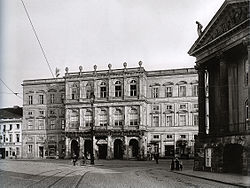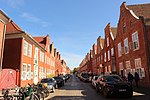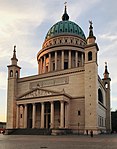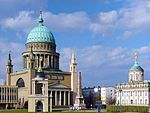Berlin Gate
Brandenburg building and structure stubsBuildings and structures in Potsdam

The Berlin Gate (Berliner Tor) is a largely vanished city gate in Potsdam, on the corner Türkstraße of Berliner Straße— it was originally at the end of Charlottenstrasse, but when the city wall was moved in 1752 the gate was rebuilt on its final site by Jan Bouman. It was badly damaged by bombing in 1945 and only one wing remains.
Excerpt from the Wikipedia article Berlin Gate (License: CC BY-SA 3.0, Authors, Images).Berlin Gate
Türkstraße, Potsdam Historische Innenstadt
Geographical coordinates (GPS) Address Nearby Places Show on map
Geographical coordinates (GPS)
| Latitude | Longitude |
|---|---|
| N 52.399444444444 ° | E 13.067222222222 ° |
Address
Türkstraße
Türkstraße
14467 Potsdam, Historische Innenstadt
Brandenburg, Germany
Open on Google Maps










